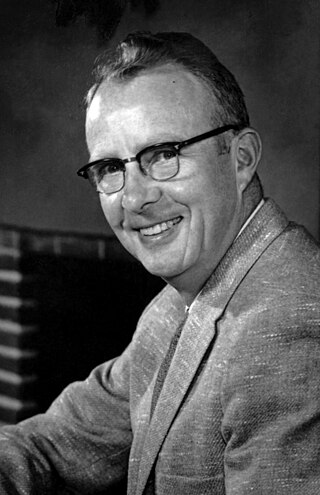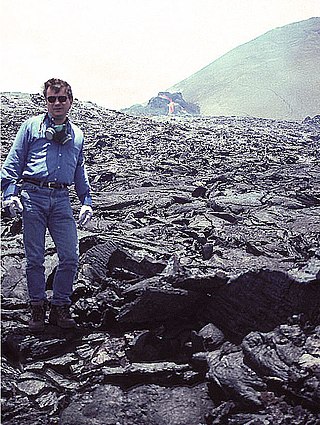Related Research Articles

An unidentified flying object (UFO), or unidentified anomalous phenomenon (UAP), is any perceived airborne, submerged or transmedium phenomenon that cannot be immediately identified or explained. Upon investigation, most UAPs are identified as known objects or atmospheric phenomena, while a small number remain unexplained.
Richard Siegmund Lindzen is an American atmospheric physicist known for his work in the dynamics of the middle atmosphere, atmospheric tides, and ozone photochemistry. He is the author of more than 200 scientific papers. From 1972 to 1982, he served as the Gordon McKay Professor of Dynamic Meteorology at Harvard University. In 1983, he was appointed as the Alfred P. Sloan Professor of Meteorology at the Massachusetts Institute of Technology, where he would remain until his retirement in 2013. Lindzen has disputed the scientific consensus on climate change and criticizes what he has called "climate alarmism".

Ancient astronauts refer to a pseudoscientific set of beliefs which holds that intelligent extraterrestrial beings visited Earth and made contact with humans in antiquity and prehistoric times. Proponents suggest that this contact influenced the development of modern cultures, technologies, religions, and human biology. A common position is that deities from most, if not all, religions are extraterrestrial in origin, and that advanced technologies brought to Earth by ancient astronauts were interpreted as evidence of divine status by early humans.

Ufology is the investigation of unidentified flying objects (UFOs) by people who believe that they may be of extraordinary origins. While there are instances of government, private, and fringe science investigations of UFOs, ufology is generally regarded by skeptics and science educators as an example of pseudoscience.
The extraterrestrial hypothesis (ETH) proposes that some unidentified flying objects (UFOs) are best explained as being physical spacecraft occupied by extraterrestrial intelligence or non-human aliens, or non-occupied alien probes from other planets visiting Earth.

The Goddard Institute for Space Studies (GISS) is a laboratory in the Earth Sciences Division of NASA's Goddard Space Flight Center affiliated with the Columbia University Earth Institute. The institute is located at Columbia University in New York City. It was named after Robert H. Goddard, American engineer, professor, physicist and inventor who is credited with creating and building the world's first liquid-fueled rocket.

Jacques Fabrice Vallée is an Internet pioneer, computer scientist, venture capitalist, author, ufologist and astronomer currently residing in San Francisco, California and Paris, France.

The Robertson Panel was a scientific committee which met in January 1953 headed by Howard P. Robertson. The Panel arose from a recommendation to the Intelligence Advisory Committee (IAC) in December 1952 from a Central Intelligence Agency (CIA) review of the U.S. Air Force investigation into unidentified flying objects, Project Blue Book. The CIA review itself was in response to widespread reports of unidentified flying objects, especially in the Washington, D.C. area during the summer of 1952.

The Condon Committee was the informal name of the University of Colorado UFO Project, a group funded by the United States Air Force from 1966 to 1968 at the University of Colorado to study unidentified flying objects under the direction of physicist Edward Condon. The result of its work, formally titled Scientific Study of Unidentified Flying Objects, and known as the Condon Report, appeared in 1968.
Solar physics is the branch of astrophysics that specializes in the study of the Sun. It intersects with many disciplines of pure physics, astrophysics, and computer science, including fluid dynamics, plasma physics including magnetohydrodynamics, seismology, particle physics, atomic physics, nuclear physics, stellar evolution, space physics, spectroscopy, radiative transfer, applied optics, signal processing, computer vision, computational physics, stellar physics and solar astronomy.
Richard John Alexander Talbert is a British-American contemporary ancient historian and classicist on the faculty of the University of North Carolina at Chapel Hill, where he was William Rand Kenan, Jr., Professor of History and is currently Research Professor in charge of the Ancient World Mapping Center. Talbert is a leading scholar of ancient geography and ideas of space in the ancient Mediterranean world.

Abraham "Avi" Loeb is an Israeli-American theoretical physicist who works on astrophysics and cosmology. Loeb is the Frank B. Baird Jr. Professor of Science at Harvard University, where since 2007 he has been Director of the Institute for Theory and Computation at the Center for Astrophysics. He chaired the Department of Astronomy from 2011–2020, and founded the Black Hole Initiative in 2016.

David Nathaniel Spergel is an American theoretical astrophysicist and the Emeritus Charles A. Young Professor of Astronomy on the Class of 1897 Foundation at Princeton University. Since 2021, he has been the President of the Simons Foundation. He is known for his work on the Wilkinson Microwave Anisotropy Probe (WMAP) project. In 2022, Spergel accepted the chair of NASA's UAP independent study team.
This is a list of alleged sightings of unidentified flying objects or UFOs in Italy.
The interdimensional hypothesis is a proposal that unidentified flying object (UFO) sightings are the result of experiencing other "dimensions" that coexist separately alongside our own in contrast with either the extraterrestrial hypothesis that suggests UFO sightings are caused by visitations from outside the Earth or the psychosocial hypothesis that argues UFO sightings are best explained as psychological or social phenomenon.
Paul Richard Hill (1909–1990) was a mid–twentieth-century American aerodynamicist. He was a leading research and development engineer and manager for NASA and its predecessor, NACA between 1939 and 1970, retiring as Associate Chief, Applied Materials and Physics Division at the NASA Langley Research Center. He is arguably most widely known today as the author of Unconventional Flying Objects: a Scientific Analysis.

Michael R. Rampino is a Geologist and Professor of Biology and Environmental Studies at New York University, known for his scientific contributions on causes of mass extinctions of life. Along with colleagues, he's developed theories about periodic mass extinctions being strongly related to the earth's position in relation to the galaxy. "The solar system and its planets experience cataclysms every time they pass "up" or "down" through the plane of the disk-shaped galaxy." These ~30 million year cyclical breaks are an important factor in evolutionary theory, along with other longer 60-million- and 140-million-year cycles potentially caused by mantle plumes within the planet, opining "The Earth seems to have a pulse," He is also a research consultant at NASA's Goddard Institute for Space Studies (GISS) in New York City.
The Galileo Project is an international scientific research project to systematically search for extraterrestrial intelligence or extraterrestrial technology on and near Earth and to identify the nature of anomalous Unidentified Flying Objects/Unidentified Aerial Phenomena (UFOs/UAP).
This is a list of alleged sightings of unidentified flying objects or UFOs in Greece.
References
- ↑ "Richard Stothers". New York Times. 28 August 2011. Retrieved 17 January 2022.
- ↑ Stothers, Richard B. (2007). "Unidentified flying objects in classical antiquity" (PDF). The Classical Journal. 103 (1): 79–82. doi:10.1353/tcj.2007.0009. S2CID 162503205 . Retrieved 17 January 2022.
- ↑ Stothers, Richard B. (June 2004). "Ancient Scientific Basis of the "Great Serpent" from Historical Evidence". Isis. 95 (2): 220–238. doi:10.1086/426195. PMID 15490966. S2CID 13209886.
- ↑ "Richard B. Stothers '60". Princeton Alumni Weekly. 18 January 2012. Retrieved 17 January 2022.
- ↑ "Publications by Richard B. Stothers". Alumni Bibliographies. Goddard Institute for Space Studies. Retrieved 17 January 2022.